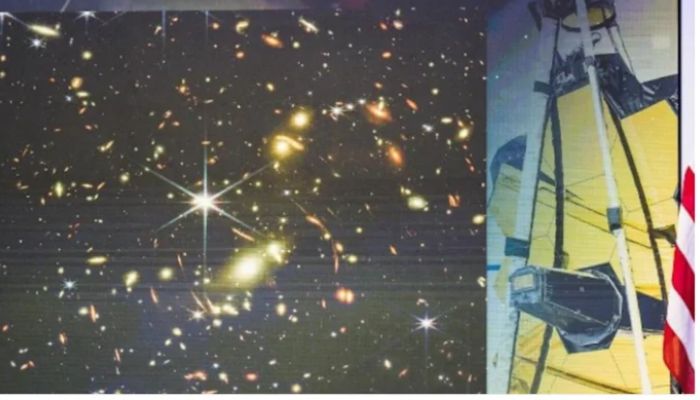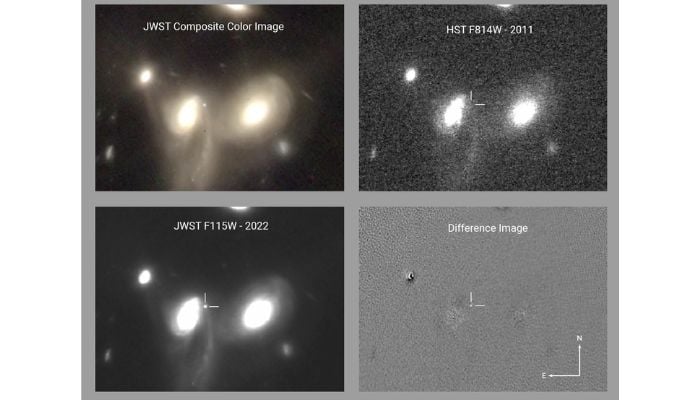James Webb might have spotted its first supernova
Five days after initial observation, the object spotted by JWST had slightly dimmed, which scientists say is how a supernova behaves
August 02, 2022

James Webb Space Telescope might have captured its first image of a supernova.
According to a report, the team behind JWST thinks it has found an infrared transient in the galaxy SDSS J141930.11+525159.3.
The team believes so because of the object's intensity of brightness. It is brighter than the rest of the galaxy. Five days after the initial observation, the object had slightly dimmed, which scientists say is how a supernova behaves.
However, it is nearly impossible to be sure whether it was a supernova yet. The space telescope team needs more time.
A supernova occurs when a star dies resulting in a very bright ball of fire.
The galaxy recently spotted by the machine is between three to four billion light years away. Therefore, if this is a supernova, it happened over three billion years ago.

While the new series of images that James Webb released are incredible, they are not as remarkable as the ones released earlier.
Originally, the telescope was built to detect water and other signs of life on distant planets. The images of different events that occur in the space are exciting by-products.
Despite being slightly damaged, JWST has not disappointed people with all the images it has captured.











